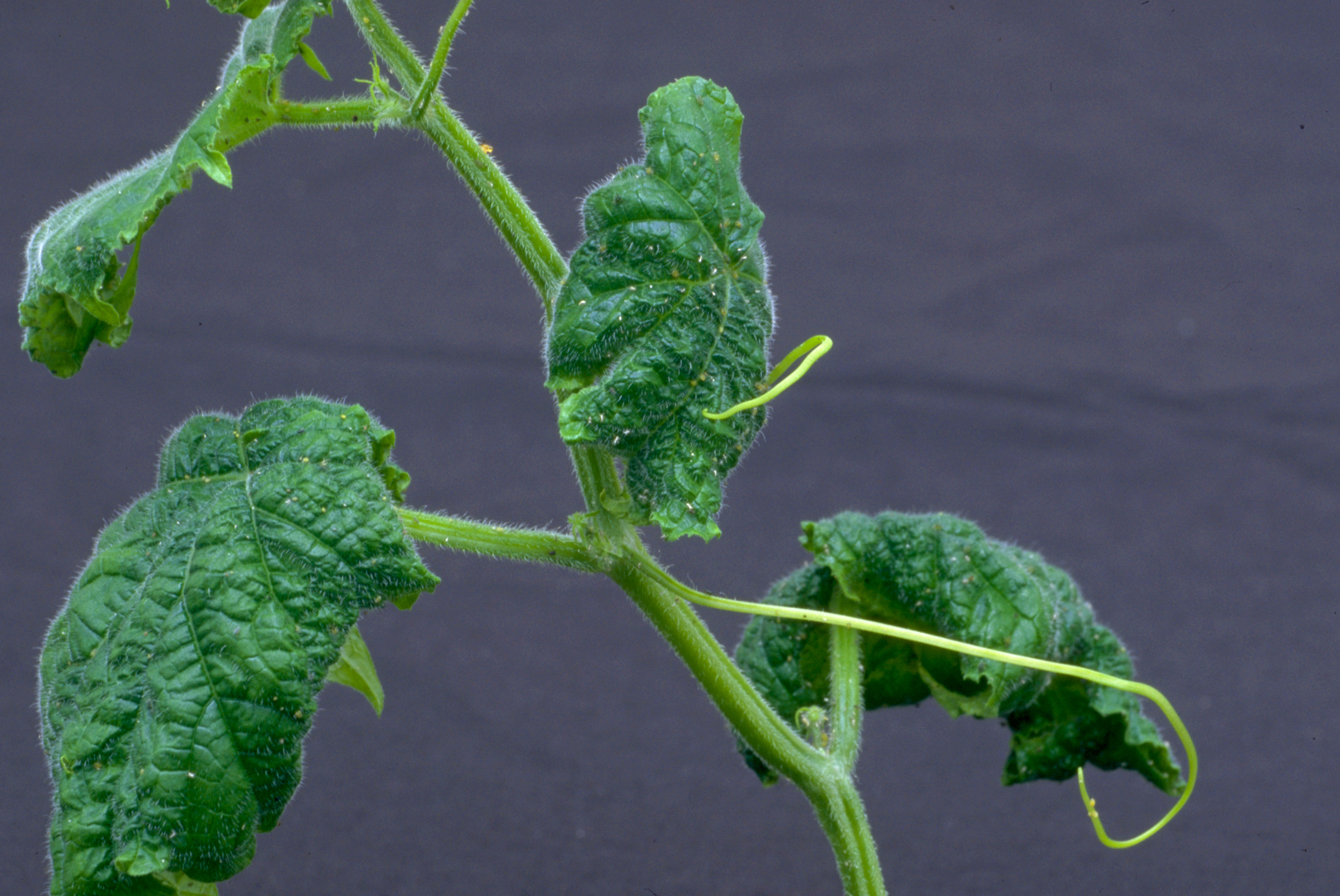General
The cotton aphid (Aphis gossypii) is an extremely polyphagous aphid found on more than 700 plant species. Crop plants attacked by this aphid include cotton, citrus, coffee, cocoa, eggplant, cucumber, melon, pepper and many ornamental plants such as chrysanthemum and kalanchoe. The cotton aphid (Aphis gossypii) is distributed throughout the world but prefers the warmer regions. It has been a pest in European greenhouses since the late 1980’s, particularly affecting cucumber.
Life cycle and appearance of Cotton aphid
Aphids have a complex life cycle, with both winged and wingless forms of adults and a great variety in colour. In greenhouses reproduction takes place by parthenogenesis, with unfertilized viviparous females continuing to produce new generations of females. Aphids moult four times before reaching adulthood. With each moult they shed white skin, betraying their presence in the crop. The cotton aphid can be distinguished from other aphids by the colour of the two cornicles (siphunculi). These cornicles are always black, whatever the body colour, which can vary widely, from light yellow to light green, or even a green-black colour . This body colour depends on temperature, food source and the density of the population. Large individuals (up to 1.8 mm long) are usually dark green to black, while aphids produced in overcrowded colonies at a high temperature can be much smaller (from 0.9 mm), and yellow or cream-coloured. Cotton aphids have red eyes and relatively short antennae.
Damage symptoms
The cotton aphid (Aphis gossypii) is an important vector for viral diseases. This aphid species can transmit more than 50 different viruses, including the cucumber mosaic virus.
Nymphs and adults extract nutrients from the plant and disturb the balance of growth hormones. As a result, the plant’s growth is retarded giving rise to deformed leaves or, if the infestation occurs early enough in the season, the death of young plants. Retarded growth and defoliation reduce yield.
Plant sap is rich in sugars, but has a low protein content. Aphids therefore need to extract large quantities of sap to get sufficient protein. The excess sugar is secreted in the form of honeydew, making the crop and its fruit sticky. Black fungal moulds (Cladosporium spp.) grow on this honeydew, contaminating fruit and ornamental crops and rendering them unsuitable for market. At the same time, photosynthesis in the leaves is reduced, affecting production.

